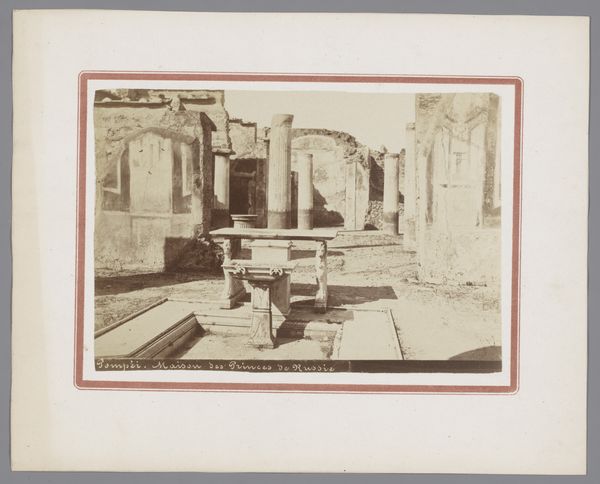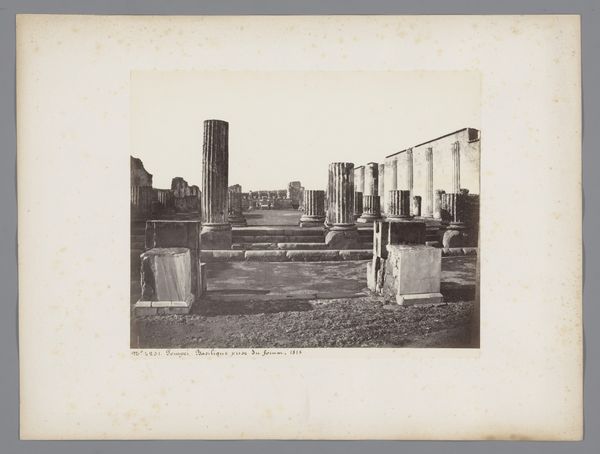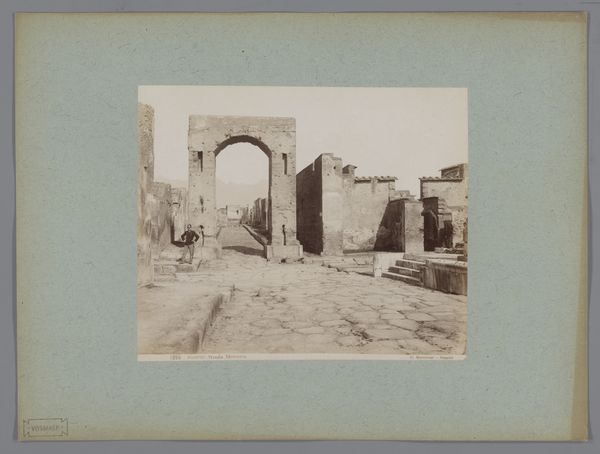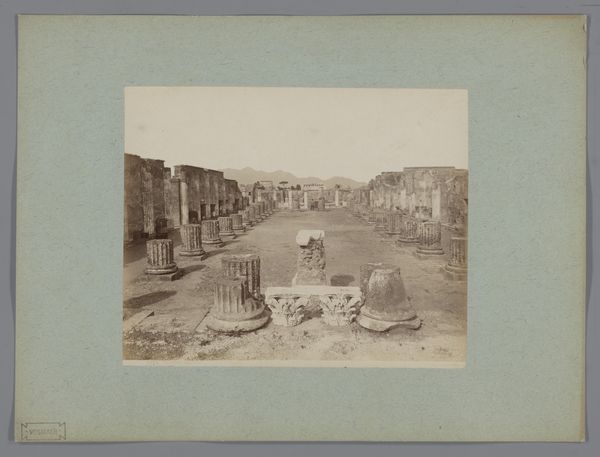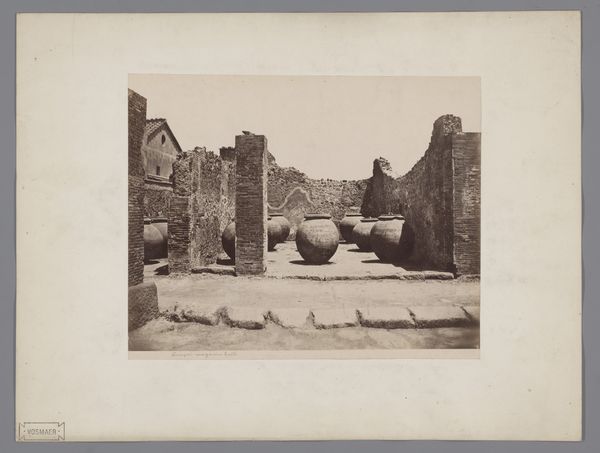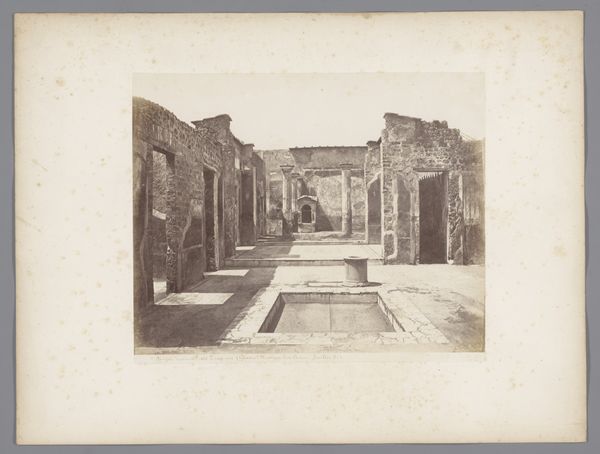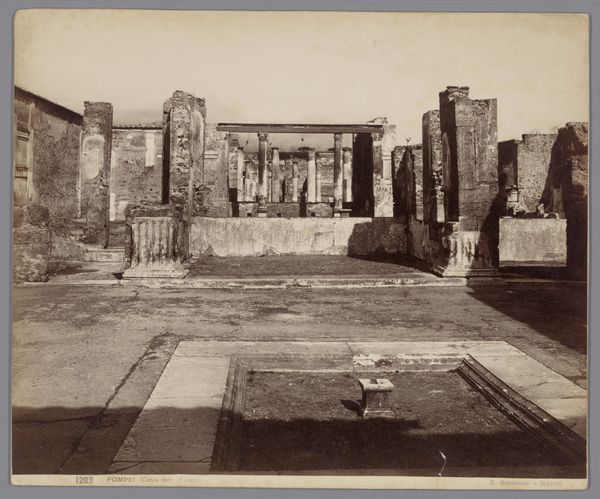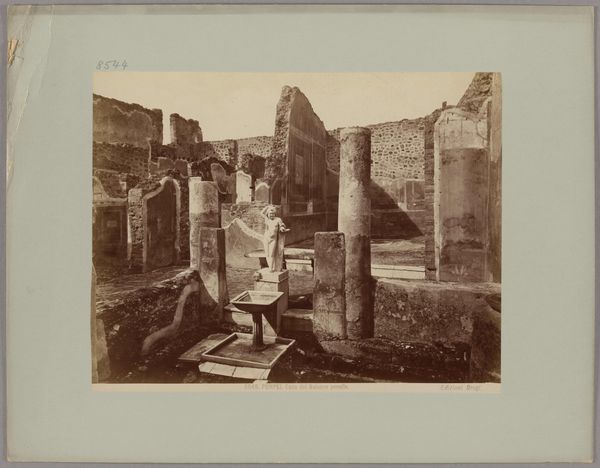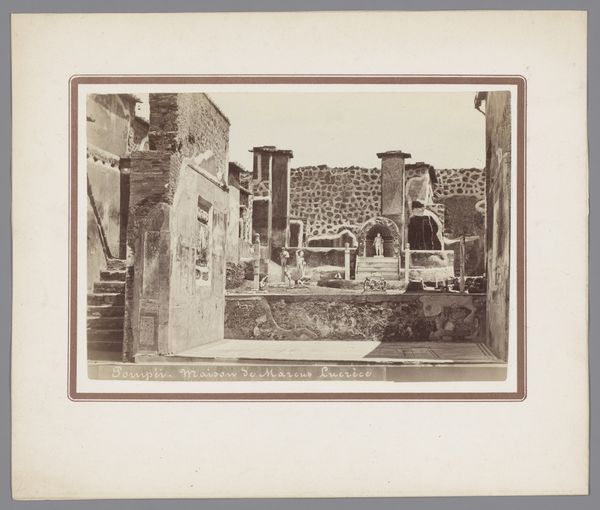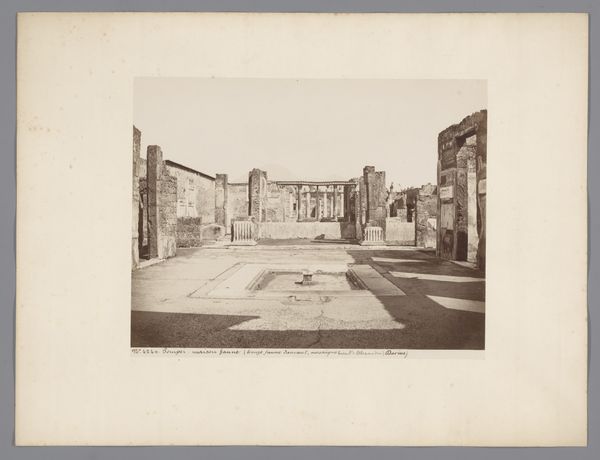
photography, gelatin-silver-print
#
landscape
#
photography
#
ancient-mediterranean
#
gelatin-silver-print
#
italian-renaissance
Dimensions: height 314 mm, width 420 mm
Copyright: Rijks Museum: Open Domain
Curator: What strikes me immediately is the emptiness of it all. It feels incredibly silent, despite the implied history. Editor: That's precisely the power of this photograph by Giorgio Sommer. Taken between 1863 and 1875, this gelatin-silver print, titled "Ruïne van de Tempel van Jupiter te Pompeï" in Dutch, captures the ruins of the Temple of Jupiter in Pompeii. It is currently housed in the Rijksmuseum. What do you see in terms of symbols or motifs? Curator: The repetition of the broken columns is fascinating. They are vestiges, pointing both upward to the divine and downward to mortality. Each broken column marks both a memory and a disruption in memory. It makes you wonder about the symbolic value of columns through centuries. Editor: Absolutely. Columns, arches, and repeated geometric forms like squares speak of the aspirations of that ancient civilization—the human desire for order, stability, and a connection to something larger. Yet, here, that striving is confronted by decay. The monochrome palette certainly underscores that sense of time's passage and loss. Curator: There's almost a deliberate stillness, like it is posing, allowing us to reflect on how empires rise and fall, reminding us that human achievement is often ephemeral. Did the artist intend to convey this idea, or is that imposed by our contemporary understanding? Editor: It's hard to say definitively what Sommer intended, but 19th-century photography of ancient sites often carried that Romantic fascination with ruins, with vanished glory. There's a deliberate choice here to document this spot that clearly resonates with a wider sense of human destiny. I feel drawn to the photograph's play of light and shadow, as a record that captures so perfectly that poignant dialogue between time and form. Curator: It leaves one with a feeling of contemplative awe. Thank you for highlighting the narrative beyond what the image portrays, I will look differently at architectural photography going forward.
Comments
No comments
Be the first to comment and join the conversation on the ultimate creative platform.
